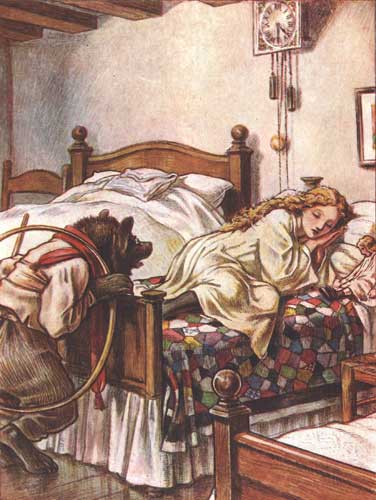The
Three Bears or Goldilocks and the Three Bears is a notable children’s bedtime
story. It first became widely known in 1837 when the poet Robert Southey
composed it as a prose story, collected in his book The Doctor, although it was
possibly based on an even older story.
The story was very popular and retold by many others. George Nicol retold Southey’s story in verse. According to Southey’s story, a copy of which is displayed in Keswick Museum and Art Gallery in Cumbria, the visitor to the bears’ home was a “naughty old woman”; later versions of the story replaced the old woman with a girl named Silver-hair. George MacDonald mentions the three bears of Silverhair in his 1867 story The Golden Key. Joseph Jacobs included a fairy tale Scrapefoot in his More English Fairy Tales, identical in every respect to “The Three Bears” except that milk replaces the porridge, and the visiting character is a lame fox. This saw print later than Southey’s version, but it may have predated it in the oral tradition; some have hypothesized that Southey heard a tale about a literal vixen and mistook it for a figurative vixen,

Cartoon
version of the 3 bears
a
harridan. Charles Dickens’ “Our Mutual Friend” contains a reference to a
version of the story with three hobgoblins instead of bears.
Goldilocks
first appeared in the 1904 printing of Old Nursery Stories and Rhymes. The story
continues to grow and change. Recent versions include the story told from the
point of view of the three bears. The story was humorously adapted into a
popular song in 1946 by songwriter Bobby Troup; this song too is often
erroneously credited as “anonymous”.
